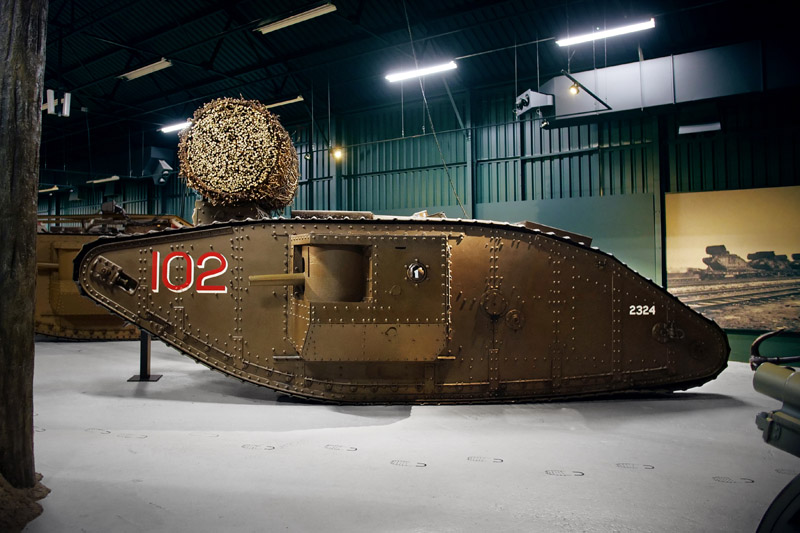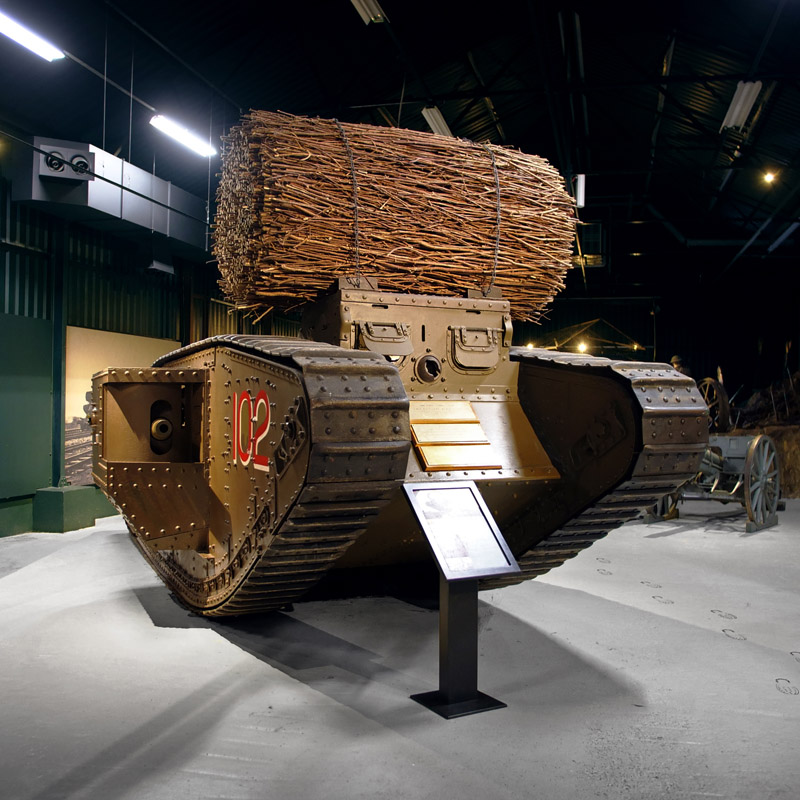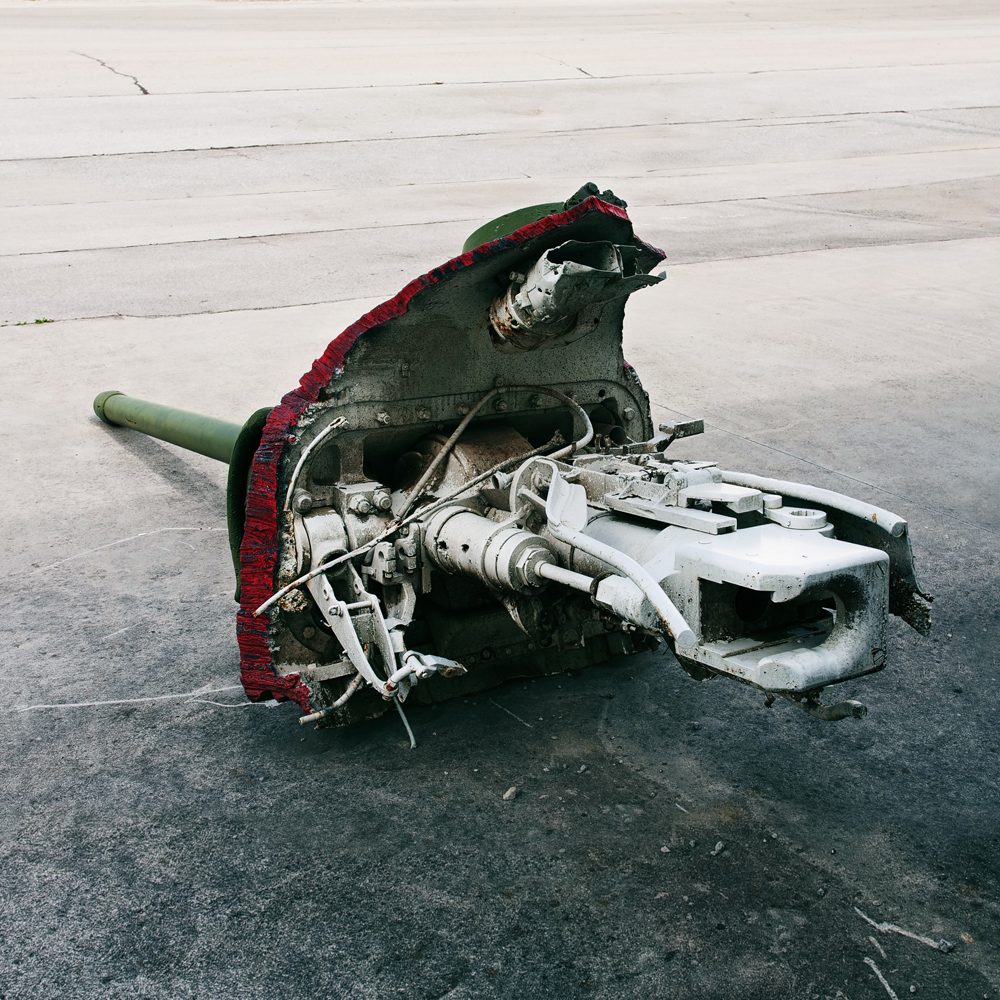Type: Heavy Tank
Nation: United Kingdom
Period: World War 1
Location: The Tank Museum, Bovington, UK

Clever refinements
The Mark IV‘s production began in March 1917 and was carried out at several factories in England and Scotland. As the long six-pounder guns on previous tanks had had a tendency to get stuck in the ground or snag on trees, the male Mark IV was equipped with shorter weapons. The sponsons had been redesigned with a slimmer profile at the bottom to avoid contact with the ground. With some preparations, the new sponsons could be pushed into the hull to reduce the tank’s width for railroad transport. In contrast, the Mark I‘s sponsons needed to be dismounted every time before loading the vehicle onto a train. Not only was this a labourious and time-consuming process, it also turned out that there was the possibility that the Mark I’s hull would get irreparably twisted once the stabilising sponsons were removed.

A whole lot of wood
Although the Mark IV was first used in combat on 7 June 1917 at the Battle of Messines Ridge, it is most prominently remembered for its role in the Battle of Cambrai – the world‘s first coordinated mass tank attack that demonstrated the true potential of the still very new weapon system. On the morning of 20 November 1917 Brigadier General Hugh Elles, the commander of the recently established Tank Corps, was leading well over 400 tanks towards the Hindenburg line. At this defensive position the Germans had been digging extra-wide trenches that were supposed to prevent any tank from crossing over. Having learned about the wider trenches prior to the attack, the British had equipped their Mark IVs with fascines. These large bundles of wooden sticks would be dropped into the trenches to help the tanks climb over to the other side. The Battle of Cambrai was the only time the British Army used fascines in World War 1, but it became the starting point of a long-lasting tradition: During World War 2 the Royal Engineers would carry fascines on some of their Churchill AVREs and even the modern Trojan AVREs come with fascines made from pipes.

Protecting Britain?
In 1917 several Mark IVs were sent to Bovington, where they were used for crew training alongside the older interim Mark IIs and Mark IIIs. This particular vehicle with the production number 2324 was one of these machines. Training tanks were usually identified by large three-digit tactical numbers, while the vehicles issued to front-line units were given a capital letter indicating their battalion or company and one or two digits for their number in the unit. Since this tank never saw combat, it was not equipped with roof rails or an unditching beam – these modifications were only being installed on Mark IVs by Central Workshops directly in France. On 1 May 1919 „Tank 102“ was ceremoniously gifted to “HMS Excellent”, the Royal Navy Gunnery School at Whale Island, as a token of gratitude for training the first tank gunners. It remained there as a gate guard until 1940, when – facing the threat of a German invasion – the tank was reactivated by an enthusiastic officer to patrol Portsmouth Dockyard. Of course the Germans never came, but allegedly the tank managed to shoot down some parachute flares with an improvised roof-mounted anti-aircraft Lewis gun and at one point it accidentally damaged an unlucky civilian‘s parked car. During that time the tank was painted in a two-tone camouflage scheme and went by the name „Excellent“. In 1970, serving personnel from “HMS Excellent” began restoring the Mark IV to its original appearance. The vehicle was returned to Bovington in 1975 to become part of The Tank Museum’s collection. Having been kept in running condition, the tank was used in filming the 1984 BBC TV series „Soldiers“ – but due to its historical value, it hasn‘t been driven since the eighties.


3 responses to “Mark IV (Male)”
[…] be implemented on the Mark V – after more than a whole year‘s delay. In total, around 1,200 Mark IVs were built: 400 males, 600 females and 200 supply tanks. The controversial decision to clog up all […]
LikeLike
[…] machine guns were better suited to hitting the enemy while being on the move. The gunners on male Mark IVs more often fired their six-pounders for […]
LikeLike
[…] tight metal box with a ceiling so low that they weren’t able to stand up. Like on the British Mark IV, the fume-exuding petrol engines were mounted openly in the fighting compartment. Although the […]
LikeLike